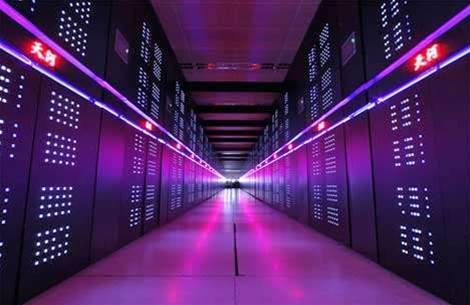The Tianhe-2 or Milky Way 2, a government sponsored supercomputer housed in Changsha, China, is still the world's fastest, according to the November edition of the biannual Top 500 list.

Tianhe-2 is nearly twice as quick as the number two supercomputer, the United States Department of Energy's Titan, being able to reach 33.86 peta floating point operations per second (FLOPS) compared to 17.59 for the latter, using the High Performance Linpack benchmark.

Running the Chinese Kylin Linux distribution, Tianhe-2 features 16,000 compute nodes with two Intel Xeon and three Intel Xeon Phi processors each. In total, the system has 3.12 million cores, with 1,375 terabytes of memory.
On top of the Intel processors, the Chinese supercomputer has a management front-end system with 4,096 1.8 GHz SPARC-based processors, each with 16 cores.
Peak power consumption for Tianhe-2 is said to be around 24 megawatts, with cooling included.
China is Asia's largest user of supercomputing systems and is home to 63 of the world's top 500 machines. This compares to 265 in the United States and 102 in Europe.
Australia's fastest supercomputer, a Fujitsu-built PRIMERGY CX250 S1 at the ANU's National Computational Infrastructure facility reached the 33rd spot on TOP500 with a peak performance of 978.6 teraflops.
On the alternative Graph500 benchmark, Tianhe-2 took the sixth spot in the world, being capable of 2,061.48 giga traversed edges per second. The IBM Sequioa-Blue Gene-Q supercomputer at the Lawrence Livermore National Laboratory at the University of California takes out top spot under the Graph500 measure with 15,363 GTEPS, followed by two two other IBM Blue Gene/Q machines in France and Germany.


.png&h=140&w=231&c=1&s=0)








 iTnews Executive Retreat - Security Leaders Edition
iTnews Executive Retreat - Security Leaders Edition











_(1).jpg&h=140&w=231&c=1&s=0)



